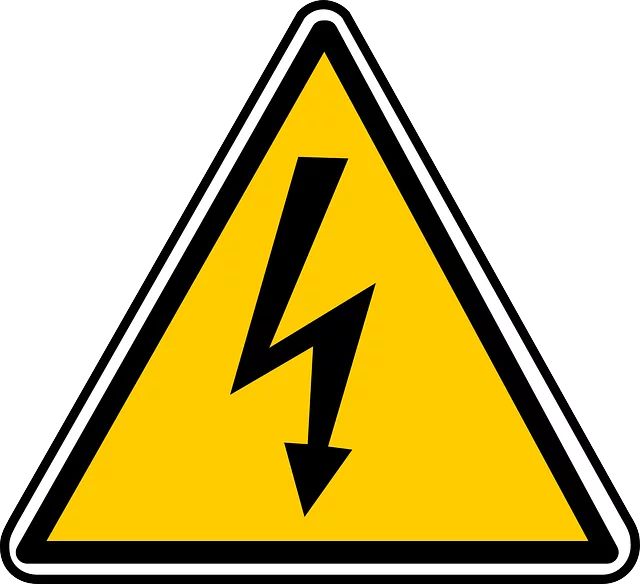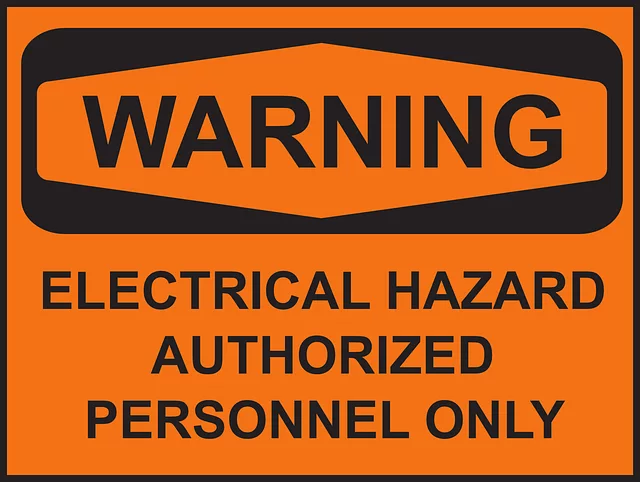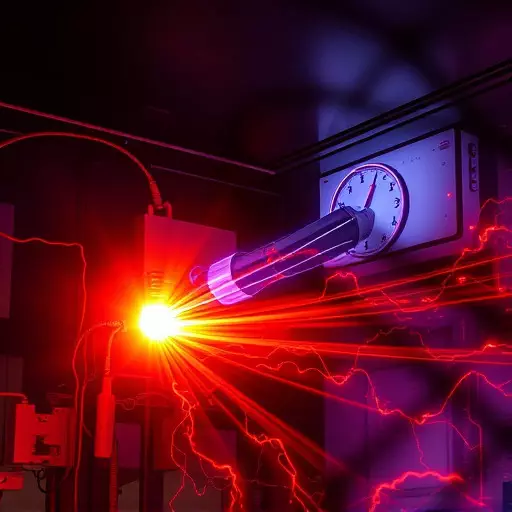Arc flash hazard analysis is a critical process for identifying and mitigating risks in industrial environments, where electrical arcs can cause severe burns, eye damage, and equipment destruction. By examining voltage, current, gap distance, and surrounding materials, professionals predict arc flash severity and implement risk reduction strategies like grounding, shielding, and personal protective equipment (PPE). This comprehensive approach ensures adherence to electrical safety standards, protects workers, and minimizes workplace disruptions. Regular AFHA updates, coupled with strategic interventions, regular inspections, PPE usage, and advanced training programs, further enhance electrical safety compliance and prevent arc flash incidents. Advanced technologies and specialized Arc Flash Engineering Services play a pivotal role in modern risk management, transforming industrial safety and ensuring operational continuity.
“Arc flash hazards pose significant risks in industrial environments, with potential for severe injuries and damage. This comprehensive guide explores the critical aspects of arc flash engineering services, offering a roadmap to enhancing workplace safety. We delve into understanding arc flash hazards, the necessity of detailed hazard analysis, and identifying high-risk areas.
Furthermore, it discusses strategic approaches to mitigating risks, best practices for adherence to electrical safety standards, and the evolving role of advanced technologies. Through real-world case studies, we demonstrate the successful implementation of these services, providing valuable insights into arc flash risk reduction.”
- Understanding Arc Flash Hazards: Risks and Impact
- The Importance of Arc Flash Hazard Analysis
- Identifying High-Risk Areas for Arc Flash Mitigation
- Strategies for Arc Flash Risk Reduction in Industrial Settings
- Best Practices for Electrical Safety Compliance
- Role of Advanced Technologies in Arc Flash Management
- Case Studies: Successful Implementation of Arc Flash Engineering Services
Understanding Arc Flash Hazards: Risks and Impact
Arc flash hazards are a significant concern in industrial settings, presenting severe risks to personnel and equipment. These hazards arise from electrical arcs, which can occur due to various factors like faulty wiring, inappropriate maintenance, or human error. When an arc flash happens, it releases intense heat, light, and pressure waves, potentially causing severe burns, eye damage, and even death. Moreover, the resulting fire or explosion can lead to substantial material damage.
An arc flash hazard analysis is crucial for identifying and mitigating these risks, ensuring electrical safety compliance. By evaluating factors such as voltage, current, gap distance, and surrounding materials, professionals can determine the potential severity of an arc flash event. This analysis guides implementation of arc flash risk reduction strategies, including proper grounding, shielding, and personal protective equipment (PPE). Such measures are essential to protect workers and minimize the impact of arc flash hazards in the workplace.
The Importance of Arc Flash Hazard Analysis
Arc flash hazard analysis is a critical step in ensuring electrical safety compliance and significantly reducing risks associated with arc flash events. This comprehensive process involves identifying potential hazards within an electrical system, evaluating the likelihood and severity of an arc flash incident, and implementing strategic measures to mitigate these risks. By delving into this analysis, businesses can identify vulnerable areas, understand the inherent dangers, and take proactive steps to protect their employees and facilities.
A thorough arc flash hazard analysis allows for the development of tailored strategies aimed at minimizing exposure to electrical hazards. It considers factors like equipment design, operational procedures, and personal protective equipment (PPE) to create a safe working environment. Moreover, it helps in selecting appropriate circuit protection devices, designing proper grounding systems, and implementing effective maintenance programs, ultimately leading to enhanced arc flash risk reduction and improved overall electrical safety compliance.
Identifying High-Risk Areas for Arc Flash Mitigation
Identifying high-risk areas is a critical step in mitigating the dangers associated with arc flashes. These electrical events, though rapid and localized, can result in severe injuries or fatalities due to their intense heat and pressure. An Arc Flash Hazard Analysis (AFHA) is a comprehensive evaluation process that pinpoints vulnerable sectors within an electrical system. It involves scrutinizing equipment, circuit configurations, and operational practices to understand potential arc flash scenarios. By identifying high-risk areas, such as locations with high voltage, loose connections, or complex interconnections, engineers can implement targeted strategies for arc flash risk reduction.
Electrical safety compliance is paramount in any industrial or commercial setting. Once high-risk areas are identified, the next step is to develop and implement a tailored plan for improving electrical safety. This may include upgrading outdated equipment, installing advanced protective devices, enhancing personnel protective equipment (PPE), and providing comprehensive training to ensure workers can operate safely and respond effectively in case of an arc flash incident. These proactive measures not only protect employees but also comply with regulatory standards, ensuring a safer working environment.
Strategies for Arc Flash Risk Reduction in Industrial Settings
In industrial settings, managing arc flash hazards is paramount for ensuring electrical safety compliance and minimizing risks to personnel. A comprehensive approach to arc flash risk reduction involves several key strategies. Conducting a thorough Arc Flash Hazard Analysis (AFHA) forms the foundation, identifying potential sources of arcing and assessing the associated risks. This data-driven analysis enables engineers to make informed decisions about protective measures.
Implementing engineering controls, such as proper grounding, overcurrent protection devices, and arc detection systems, plays a crucial role in mitigating arc flash risks. Additionally, employing personal protective equipment (PPE) specifically designed for high-risk tasks ensures that workers are protected during operations involving potential arcing events. Regular training programs educate personnel on arc flash hazards, safe work practices, and the proper use of PPE, fostering a culture of safety across the facility.
Best Practices for Electrical Safety Compliance
Staying ahead of electrical hazards is paramount for any industrial facility. To ensure electrical safety compliance, a comprehensive approach is necessary, starting with an in-depth arc flash hazard analysis. This process involves identifying potential sources of ignition and evaluating their associated risks. By understanding these factors, facilities can implement tailored strategies to mitigate the arc flash risk reduction.
Best practices recommend regular inspections, proper training for personnel, and the use of Personal Protective Equipment (PPE). Additionally, implementing Arc Flash Safety Systems, such as surge protection devices and automated shutdown mechanisms, can significantly enhance safety measures. These proactive steps not only protect workers but also ensure continuous operations by minimizing downtime caused by electrical incidents.
Role of Advanced Technologies in Arc Flash Management
In today’s digital era, advanced technologies play a pivotal role in managing and mitigating arc flash hazards within industrial settings. These cutting-edge tools empower professionals to conduct thorough arc flash hazard analyses, enabling them to identify potential risks and implement effective risk reduction strategies. By leveraging sophisticated software and simulation models, engineers can predict arc flash behavior, calculate incident energy levels, and design appropriate protective systems, ensuring electrical safety compliance.
Furthermore, these technologies streamline the process of developing comprehensive safety protocols and training programs. They facilitate regular updates and modifications to safety measures based on new findings and industry standards, keeping up with evolving electrical safety requirements. Ultimately, this integration of advanced technologies in arc flash management contributes significantly to enhancing workplace safety and reducing the likelihood of severe injuries or fatalities associated with arc flash events.
Case Studies: Successful Implementation of Arc Flash Engineering Services
In recent years, many organizations have turned to Arc Flash Engineering Services to mitigate risks associated with arc flash hazards in their facilities. Case studies highlight successful implementations where detailed arc flash hazard analyses were conducted, followed by strategic interventions to reduce risk levels significantly. These services not only help in achieving electrical safety compliance but also ensure that operations continue uninterrupted during the process.
For instance, a leading manufacturing plant faced challenges in maintaining productivity due to extended downtime caused by previous arc flash incidents. By engaging specialized engineers, they underwent a comprehensive assessment, identifying high-risk areas and implementing improved protective systems. This proactive approach resulted in a marked reduction in potential hazards, enhancing worker safety and enabling the facility to operate at optimal efficiency, meeting industry standards for electrical safety compliance.


